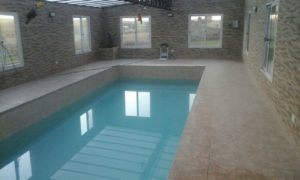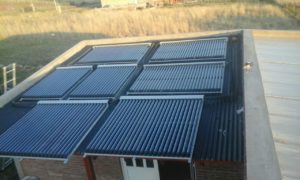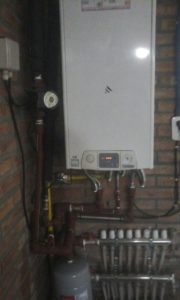What qualities should we consider when selecting a solar thermal collector?
Are two:
1- Its constructive qualities. Determines the durability and architectural integration possibility.
2- His energetic qualities. Determines economic performance.
In some respects both qualities are interrelated.
A good solar collector is one who possesses both qualities well balanced for the intended application.

There is no use a solar collector with an extraordinary energy intake if their constructive qualities fail or degrade quickly, since the profitability of these facilities is measured in the medium term.
There is no use a solar collector with extraordinary constructive qualities if their energetic qualities fail, because, simply, it is not fulfilling its main task.
By observing the solar collector performance curve, we see that it depends on a variable which is the temperature T, which in turn depends on the solar radiation I, on solar collector fluid inlet temperature Te and on ambient temperature Ta.
That is, the performance of a collector depends:
– On one side of the weather conditions, given by I and Ta,
– On the other side of the working conditions, that is, of what it is used, given by Te.
Therefore, when selecting a collector must be considered:
1) The application will have (only ACS, only heating, hot water and heating, pool heating, etc.).
2) Climatic and radiation conditions of facility location.
3) Models performance curves.
4) Equipment price.
5) The economic profitability (based purely on the relationship between price and yield) and investment recovery period.
6) Its construction quality.
You need to balance construction quality with energetic quality.

There is an open debate among professionals about which of the two most used collectors technologies is the most appropriate: flat or vacuum tube collector?
Those who opt for vacuum tube collectors consider them more advanced and argue that in the future this technology will eventually displace definitely flat plate collectors because of their better performance.
The increased cost gap of vacuum tube collectors respect to flat collectors has been reduced and we can find collectors of both technologies at the same price.
Supporters of the vacuum tube collectors consider opting for them is compensated, because by offering higher performance per m2 we will need to purchase less collectors.
This is not necessarily true, especially in small facilities:
In a small facility that only provides ACS with good weather and radiation conditions, flat plate collectors performance and profitability will be greater.
As you increase the size of the installation, the vacuum tube collector highest performance will offset the lower absorbing surface.
We will also consider building integration of vacuum tubes direct flow collectors (U-Pipe) that can be placed vertically covering a façade or balcony.

In short, a properly trained professional must assess based on the following factors choosing one or the other technology:
• Specific requirements of the installation
• Location climatology in every season
• Previous experience
• Budget availability.
You can find content like this in the Technical – Commercial Solar Thermal Energy Manual by Sopelia



















